Brown rice flour, made by grinding whole brown rice into a fine powder, is popular for its health perks and flexibility in both cooking and baking. It provides a gluten-free option packed with fiber, vitamins, and minerals, minus the unhealthy fats. If you're out of brown rice flour, this article covers several great brown rice flour substitutes. If you want to learn more about rice flour and its types, check out my article what is rice flour!

Jump to:
🌾 Grain Highlights
- I'll introduce you to alternatives to brown rice flour, such as white rice, quinoa, and teff flour. This guide aims to enhance your gluten-free baking, ensuring deliciousness and health go hand in hand.
- Learn how each flour substitute can alter the flavor and feel of your baked goods, helping you choose the right one for different dishes.
- Find solutions to typical issues like dryness, denseness, and insufficient rise. Tips on adjusting recipes for improved moisture and texture are shared.
📜 Substitutes For Brown Rice Flour
The alternatives I share below will cater to gluten-free needs and enrich your baking with diverse flavors and textures. From nutritional benefits to taste profiles, I'll guide you through each substitute, ensuring your baked goods remain delicious!
1. White Rice Flour
White rice flour, sourced from finely milled white rice, offers a lighter alternative to brown rice flour. Its neutral taste and fine texture make it suitable for a range of gluten-free baking needs, from thickening sauces to crafting delicate pastries.
However, it can sometimes result in dry, gritty outcomes. I've found that adding a bit of extra fat or an egg can introduce the necessary moisture to balance the texture. For instance, in cookies or cakes, incorporating a tablespoon of extra butter or oil can make a significant difference.
2. Quinoa Flour
Quinoa flour is known for its high protein and fiber content, making it a nutritious brown rice flour substitute. Its slightly nutty and earthy flavor can be strong, but mixing it with a milder flour, such as tapioca or potato starch, helps balance the taste.
This blend not only softens the intensity of quinoa flour's flavor but also improves the texture of baked goods, preventing them from becoming too dense. A 50-50 mix with another flour is a good starting point for most recipes.
3. Sorghum Flour
Sorghum flour, with its mild sweetness, is excellent for gluten-free baking, closely mimicking the taste and texture of traditional wheat flour. However, its lack of gluten means that baked goods might not hold together as well.
For cookies, adding about half a teaspoon of xanthan gum per cup of sorghum flour can provide the necessary structure. When making bread, increase the xanthan gum to one teaspoon per cup. This ensures the dough retains its shape and elasticity during baking.

4. Potato Starch
Potato starch is a fantastic thickener and moisture-adder in gluten-free baking. It's particularly effective in creating tender, moist textures in cakes and bread. However, it's crucial to use it judiciously; more than 30% of potato starch in your flour blend can lead to gummy or overly moist baked goods.
For best results, combine potato starch with other gluten-free flour to achieve the desired consistency. This balance allows for the moisture benefits of potato starch without compromising the structure of your baked items.
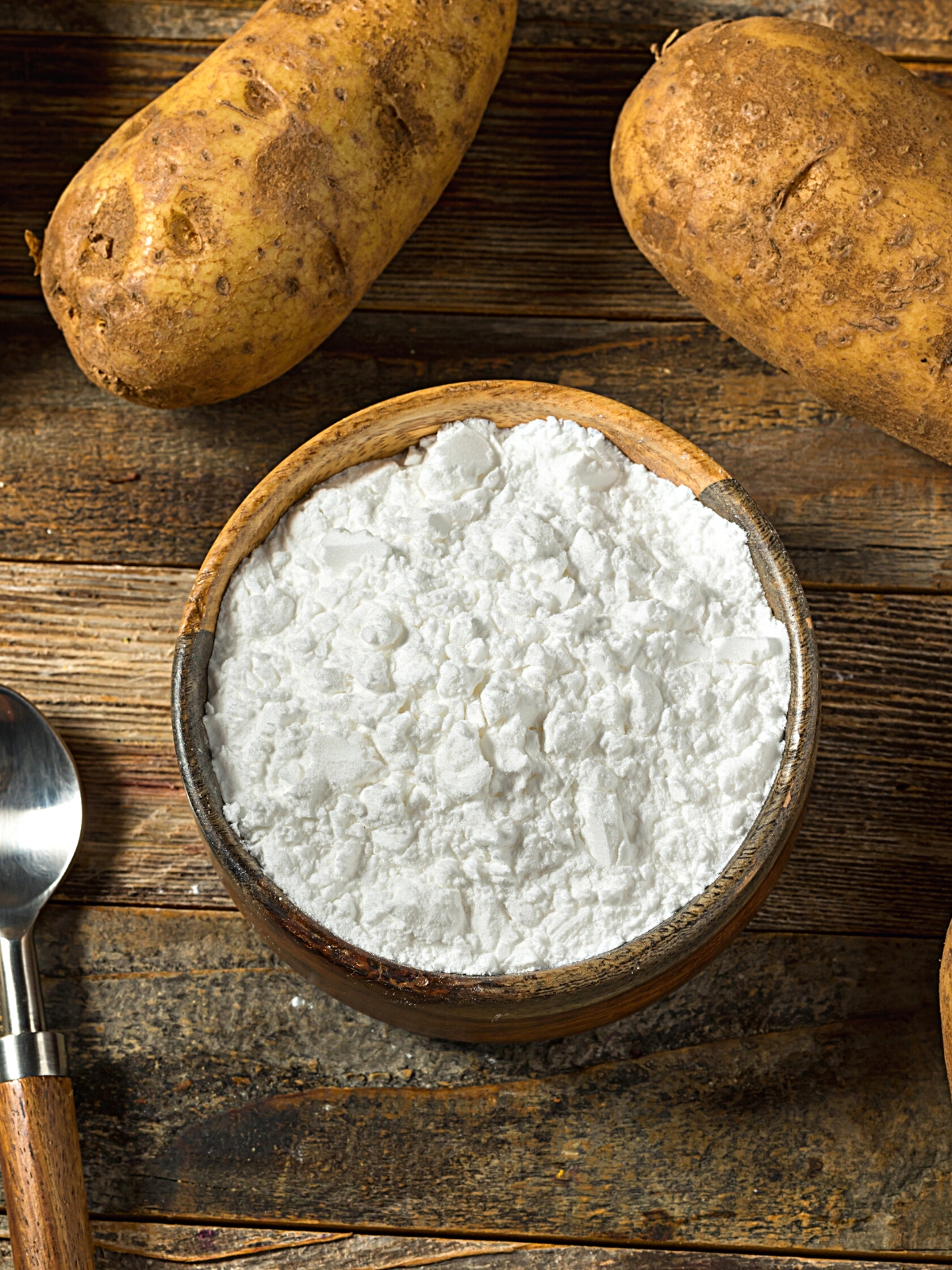
5. Oat Flour
Oat flour, made by grinding whole oats, is a heart-healthy substitute for brown rice flour. Its lack of gluten can make baked goods crumbly, but adding a binder like xanthan gum or eggs can help.
Oat flour absorbs more moisture than brown rice flour, so you may need to adjust liquid ingredients in recipes to prevent dryness. Adding about a quarter more liquid than the recipe calls for can keep your baked goods moist and tender.
6. Amaranth Flour
Amaranth flour, ground from the amaranth grain, is rich in protein and nutrients. Its strong, nutty flavor is best balanced by mixing it with milder flours, such as rice flour or cornstarch, which can also help lighten the density of baked goods.
Due to its density, amaranth flour can make recipes heavier. Incorporating a bit more leavening agent, like baking powder, can help lighten the texture. Start with a quarter teaspoon extra for every cup of flour to prevent your creations from being too dense.
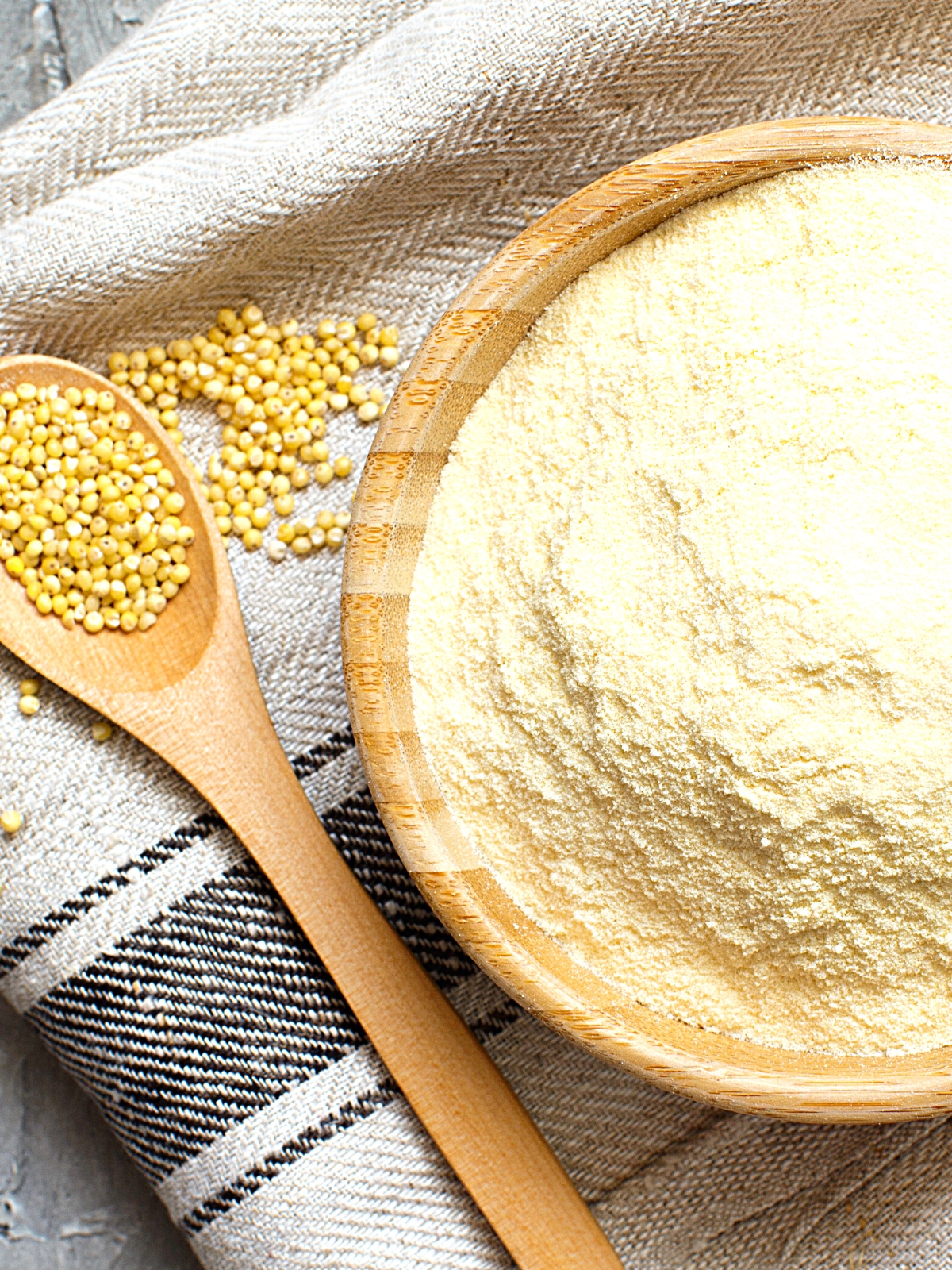
7. Almond Flour
Almond flour, made from ground almonds, is a nutritious alternative with a high protein and fat content, making it exceptionally moist and tender in baked goods.
Its lack of gluten means you might need to add binders like eggs or xanthan gum to give structure to cakes and bread. Since almond flour is rich in fats, reducing the amount of added fat in recipes can help maintain the desired consistency without becoming too greasy.

8. Coconut Flour
Coconut flour, extracted from dried and ground coconut meat, is highly absorbent and requires more liquid and eggs in recipes to avoid overly dry baked goods. Its distinct, slightly sweet coconut flavor can be prominent, so pairing it with complementary flavors or using it in recipes where coconut is a desired taste works best.
Due to its high absorbency, start by adding an extra egg or a quarter cup of additional liquid for every cup of coconut flour to maintain moisture. This approach helps in achieving a moist texture without overpowering your dish with coconut flavor.
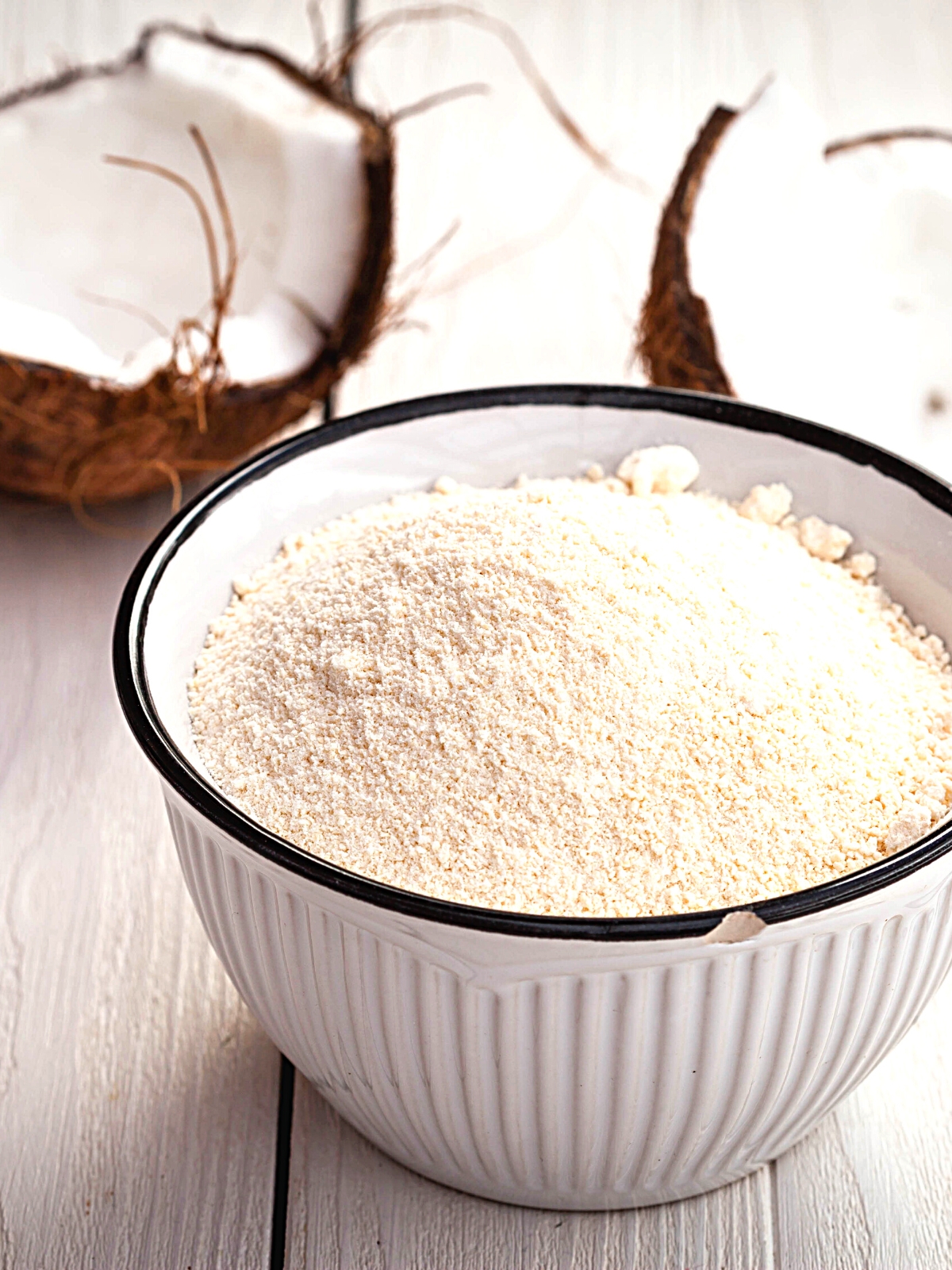
9. Teff Flour
As per Medical News Today, Teff flour, originating from the tiny grains of the teff plant, stands out for its rich, nutty flavor and is a nutritious substitute for brown rice flour. Its main challenges in baking are leading to dry, dense results and a lack of rise due to its small grain size and high fiber content.
To combat these issues, you can mix teff flour with lighter flours, such as tapioca or potato starch, to improve the texture and introduce more air into your baked goods. Additionally, increasing the leavening agent slightly can help counteract the lack of rise, ensuring fluffier outcomes.

10. Millet Flour
Millet flour, made from ground millet, is light and mildly flavored, making it a versatile substitute for brown rice flour in baking.
Its tendency to produce a dry texture can be offset by pairing it with more moisture-retentive flours like oat flour or by adding ingredients that boost moisture, such as yogurt or mashed banana.
These additions help to maintain the moisture balance in your baked goods, preventing them from becoming too dry while preserving the light, delicate flavor that millet flour brings to recipes.
11. Tapioca Flour
Tapioca flour, extracted from the cassava root, is known for its binding qualities and ability to create a light, airy, and chewy texture in baked goods.
According to WebMD, while it lacks nutritional value and has a high glycemic index, when combined with another starch or flour, such as almond flour or coconut flour, it can contribute to a desirable texture in gluten-free baking.
To avoid the potential for overly chewy or gummy textures, use tapioca flour in moderation within your flour blend. Consider incorporating high-fiber flours to balance out the nutritional profile and lower the overall glycemic index of your recipe.

🙋♀️ People Also Ask [FAQs]
You can swap brown rice flour for white rice flour one-for-one in most recipes. White rice flour is lighter and more neutral in taste, which might make your baked goods a bit denser and less flavorful. It's great when you want a mild flavor, but consider mixing it with other flours or adding more seasoning for richer recipes.
I recommend using cornstarch or potato starch as thickening agents for sauces and gravies since they're gluten-free and flavor-neutral, just like brown rice flour. You can swap them in one-for-one. But keep in mind that they thicken faster and at lower temperatures, so add them gradually and keep stirring to dodge any lumps.
For absorbent flours like coconut or almond, add ¼ cup more liquid per cup of flour. With less absorbent flours like white rice flour, you may not need extra liquid. Add liquids slowly and watch the dough or batter's consistency.
Mixing flour substitutes like almond flour with tapioca or potato starch can better match brown rice flour's texture and nutrients. This blend provides structure and a lighter feel to baked goods. A good starting point is using a half-and-half mixture and adjusting based on the results.
More Rice Substitutes
Have you given this recipe a try? We'd love to hear your thoughts! Please leave us a ⭐ review below, and don't forget to tag us @theperfectrice on Instagram and Pinterest. Your feedback means the world to us, and we really appreciate it. For more recipes, follow us on Pinterest, Facebook, YouTube, and Instagram. Thank you! 🙏
🍽️ Recipe
Homemade Brown Rice Flour Recipe
Ingredients
- 2 cups raw brown rice
Instructions
- Ensure the rice is clean and free from any debris. If it's not pre-washed, rinse it under cold water and let it dry completely.
- Place the dried brown rice into the blender or grain mill. If you're using a blender, work in batches to avoid overloading and to ensure a consistent grind.
- Secure the lid and grind the rice on the highest setting for about 1 minute. Pause and shake the blender or stir the rice to make sure all the grains are finely ground.
- Once the rice is ground, pour it through a fine mesh sieve or flour sifter into a bowl. This step helps remove any unground rice grains or larger particles, ensuring a fine flour texture.
- Collect the larger grains left in the sieve and grind them again. Repeat the sifting process until you've achieved a fine flour.
- Transfer the brown rice flour into an airtight container. Store it in a cool, dry place or in the refrigerator for a longer shelf life.
Notes
- A high-speed blender works well for making rice flour at home, but for a finer consistency, consider using a grain mill if you have access to one.
- Ensure the rice is thoroughly dried after washing to prevent clumping during the grinding process.
- Homemade brown rice flour can be stored in a cool, dry place for up to two months or in the refrigerator for up to 6 months.

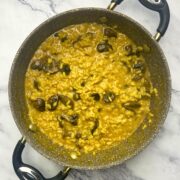
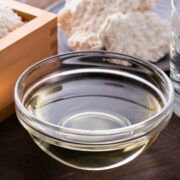
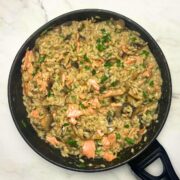
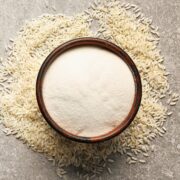


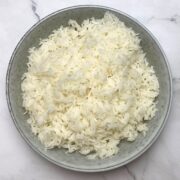



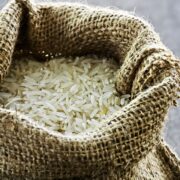
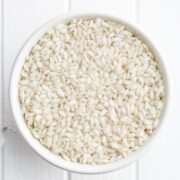
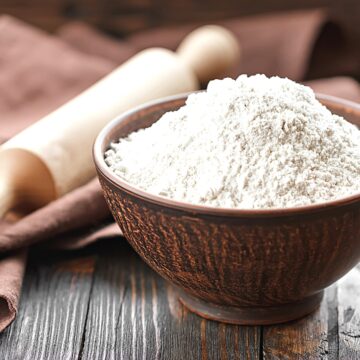

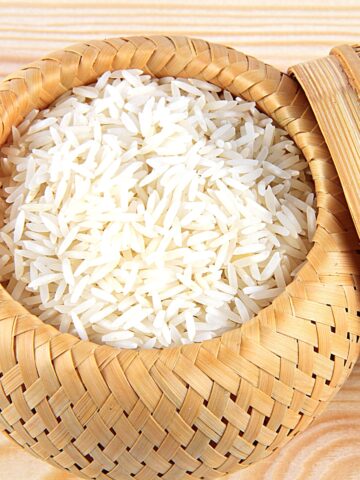
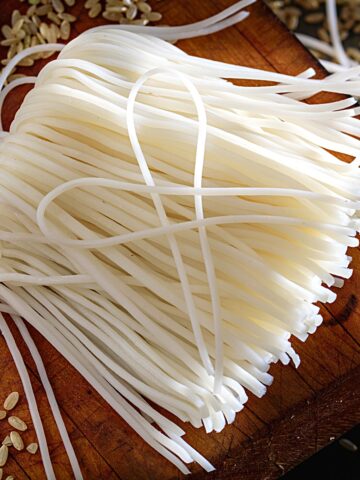

Dani Salvado
Hey there! Great article. Thank you.
Have you heard of ulu flour? Or bread fruit flour?
I was researching if that could be a substitute for brown rice flour. Any tips?
Elle John
Hey Dani! Thanks for the kind words and for bringing up ulu (breadfruit) flour. Yes, I'm familiar with ulu (breadfruit) flour. It's a gluten-free alternative to brown rice flour and can be used in many recipes due to its mild and slightly sweet taste. It's packed with nutrients, but its texture and moisture absorption might differ. When substituting for brown rice flour, start with smaller amounts and adjust as needed, especially in baking, to get the right consistency. Also, ulu flour might require a bit more liquid, so watch your dough or batter closely. Hope this helps!